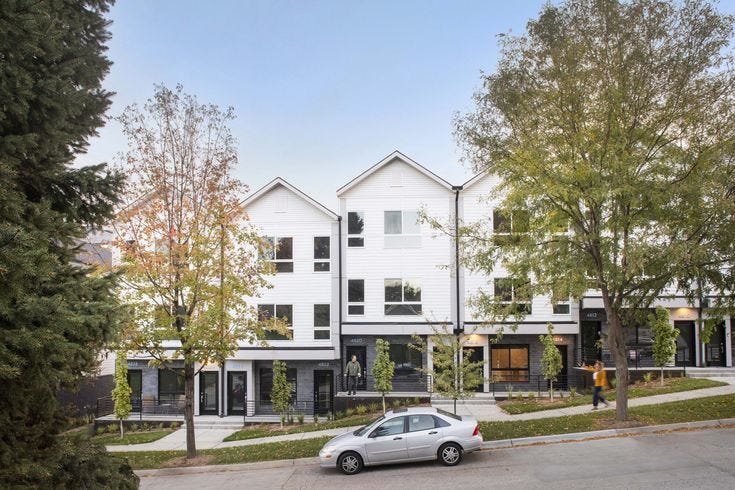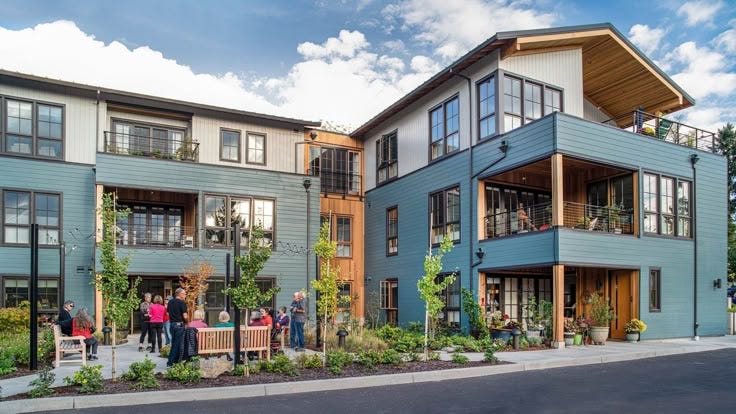How To Make Housing Affordable (Part 6)
How Housing Tax Increment Financing in Michigan Creates Affordable Housing Solutions
Understanding Housing TIF
Michigan municipalities can use a valuable policy tool called Housing Tax Increment Financing (TIF) to address housing affordability challenges. This financing method works by capturing the increased property tax revenue that comes from new housing development. When new homes are built in a TIF district, they increase the total property value in that area. The additional tax revenue from this growth gets set aside to fund affordable housing programs.
Housing TIF creates affordability through three different approaches that work together to help families at various income levels.
Method 1: Direct Assistance
Cities can use TIF revenue to provide direct rental assistance to qualifying families. This approach is called specific affordability. The program works as follows:
Developers must reserve certain units in new buildings for families earning up to 120% of the area median income
The TIF funds cover the gap between the reduced rent paid by these families and the actual cost of building and maintaining the unit
This assistance typically continues for 10 to 15 years per unit
The program is especially valuable in high-cost rental markets or communities seeking to serve households below the median income level
New townhomes are less expensive to build than traditional single family homes on large lots, but making them attainable to a middle income household might still require financial assistance.
Method 2: Increasing Housing Supply Benefits All Residents
Michigan faces a significant housing shortage. The state has not built enough homes and apartments in high-demand areas for at least two decades. This shortage has grown over time and now affects not only lower-income households, but also makes homeownership difficult for middle-income families and limits housing options for seniors who want to downsize.
Housing TIFs address this shortage by reducing development costs and speeding up construction. When developers receive assistance with infrastructure costs like roads and utilities, they can build homes more efficiently.
This creates general affordability through:
Faster construction of new housing units
Greater housing choices for all residents
Increased competition among landlords and sellers
Slower growth in housing costs across the market
New housing in a neighborhood creates more competition among sellers and landlords. This is most helpful in high demand neighborhoods where housing shortages are causing prices to rise faster than local wages.
Method 3: The Housing Chain Effect
New housing construction creates what researchers call off-site affordability. This process works through a chain reaction:
A family purchases a new home priced around $360,000
They sell their previous home for approximately $290,000
Another family can now purchase that more affordable home
This second family may vacate a rental apartment
A young person or new household can now rent that available unit
Research from the Upjohn Institute shows that one new home typically creates housing opportunities for six to seven families in a short time period. The TIF program helps start this chain by making new homes accessible to middle-income families.
New senior housing gives older households an option to downsize out of their single family homes. This frees up dozens of homes for young families to move into, which in turn frees up several apartments for the next generation who is just starting out or starting over.
Comprehensive Approach to Housing Affordability
An effective Housing TIF program addresses affordability through all three methods simultaneously:
Direct assistance: Qualifying families receive immediate access to affordable rental units
Market competition: Additional housing supply creates more options and promotes fair pricing
Chain mobility: New construction helps families move to better housing while creating opportunities for others
This multi-faceted approach ensures that Housing TIF programs serve residents across different income levels and housing needs within the community. As long as the local community has clearly defined the public benefit they intend to achieve with the use of TIF funds, it can be an excellent tool to support community goals.




